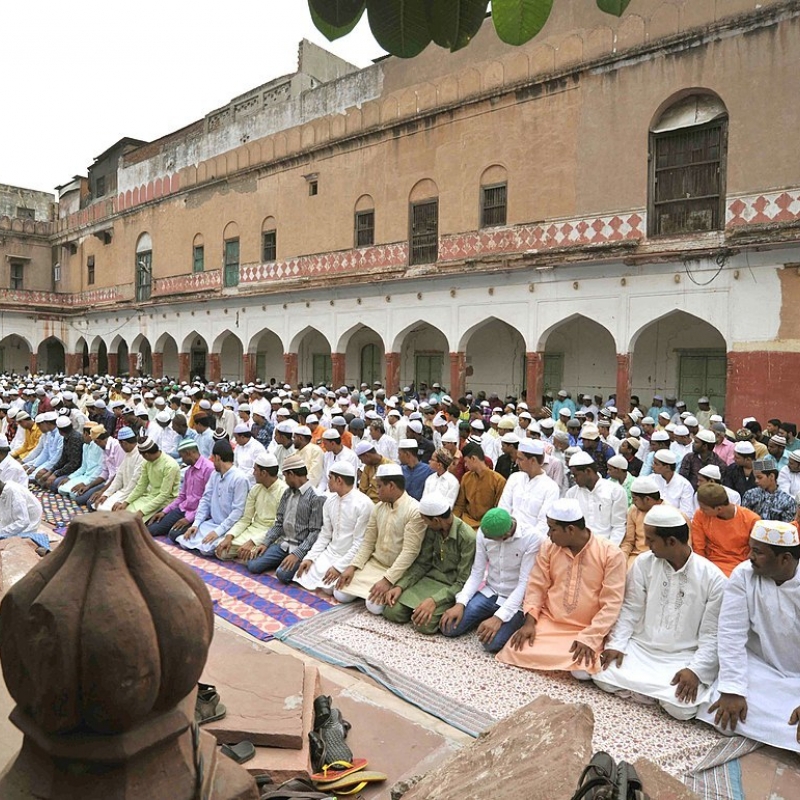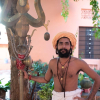Eid al-Adha and Eid al-Fitr are the two primary holidays observed by Muslims across the world. Although both are known as ‘Eid’, there are many differences between the two, including the reasons for their celebration as well as the nature of festivities. (Photo Courtesy: Ministry of Culture [GODL-India])
Muslims around the world are all set to celebrate Eid al-Adha—one of the two main festivals of Islam, the other being Eid al-Fitr. While the former is believed to symbolise the ultimate sacrifice by Ibrahim—known as Abraham in Hebrew texts—as an act of love and devotion to Allah, the latter is a celebration that marks the end of Ramadan, the holy month of fasting.
Although both festivals are identified as Eid, which means ‘feast’ in Aramaic and Arabic, there are many differences between the two, including the reasons for their celebration and the way their festivities unfold. While Eid al-Fitr literally means ‘Feast of the Breaking Fast’ and is celebrated on the first day of the month of Shawwal, Eid al-Adha means ‘Feast of the Sacrifice’ and is celebrated on the 10th day of Dhu al-Hijjah.

The story of Bakrid is related to Abraham’s willingness to perform the ultimate sacrifice—that of his son—at the command of God. In the Quran, this tale is referred to in Surah 37 (known as Surah as-Saffat). Thus, Muslims around the world carry out this ritualistic and symbolic sacrifice to show their devotion to Allah (Courtesy: Eid at jama MasjidJaithakurpix [CC BY-SA 4.0])
The names of the two festivals also have Indian variants—Eid al-Fitr is called ‘Meetha Eid’ because of its focus on the sweet dish of sewwaiyyan (a form of vermicelli pudding) that is distributed among family and friends, while Eid al-Adha is called ‘Bakrid’ or ‘Bakri Eid’ because of the lamb/goat that is deemed a sacrificial offering to God.
The story of Bakrid is related to Abraham’s willingness to perform the ultimate sacrifice—that of his son Isaac—at the command of God.[i] According to the Hebrew Bible, Genesis 22, God asked Abraham to sacrifice his son on Mount Moriah. Abraham, who was utterly devoted to God, began to carry out the command when his son was miraculously replaced by a lamb. In the Quran, this tale is referred to in Surah 37 (known as Surah as-Saffat). Thus, Muslims around the world carry out this ritualistic and symbolic sacrifice to show their devotion to Allah. Muhammad Ilyaas Patel Saheb, in his book The Spirit of Qurbaani, says:
[. . .] to kindle within ourselves this spirit of self-sacrifice, we have been ordered to follow this ‘sunnah’ of Ebrahim by sacrificing an animal on the occasion of Eidul Adha…Great rewards have also been promised to that person who performs qurbaani. It is reported in a hadeeth that the one who performs qurbaani will be rewarded for every hair on the body of the animal or for every fibre of wool in the case of sheep.
This ritual has been further elaborated upon in the Hadith, which dictates that the person or family sacrificing the goat should keep one-third of the meat, give the second portion to friends, family and neighbours, and distribute the final third among the poor and the needy.
Also Read | Ramzan Some Lesser Known Facts
This is similar to the ritual of zakat followed during Ramadan and Eid al-Fitr, where Muslims are required to give 2.5 per cent or 1/40th of their annual savings to those in need. This action of giving to the poor (in cash and in kind) highlights the similarities and differences between the two festivals.
Yet another important aspect of Eid al-Adha is that it marks the end of the Hajj—a mandatory religious journey undertaken by Muslims to the holy site of the Kaaba in Mecca. It is believed that the sins of the pilgrims—known as ‘Hajjis’—are washed away once they complete the journey.
Also Read | Siddhis of Karnataka: The Syncretic Ramzan of Tottilgundi
While these are the principal differences between the two Eids, Mushtak Khan of Sahapedia explains that there are also variations in the way the two festivals are celebrated. Eid al-Fitr, which marks the end of Ramadan, is also known as ‘Bada Eid’. It is celebrated with more fanfare, as families come together to break their fast with a huge feast. The festivities include wearing new clothes (which is not a custom during Eid al-Adha) as well as the practice of meetha moonh or having something sweet (usually sewwaiyyan) as a mark of good luck before leaving the house for the main namaz. Contrary to this, Muslims are meant to conduct the animal sacrifice during Eid al-Adha on an empty stomach. Overall, the major difference between the two Eids is in tenor—while Eid al-Fitr is more celebratory, Eid al-Adha is more ritualistic.
This article was also published on The Indian Express.
Notes
[i] According to various interpretations of the Quran, there is a dispute about whether the son who was sacrificed was either Ishmael or Isaac. The Hewbrew Bible quoted here, mentions Isaac.













